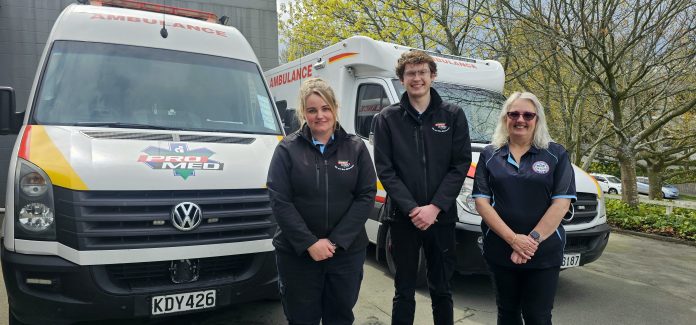
Long waits for an ambulance could be avoided if independent operators were able to take on the overflow, according to one local provider.
At the end of September Hato Hone St John announced it had experienced its busiest winter on record, with July and August marking the two heaviest months for ambulance callouts in the service’s history.
This has led to reports, including one in the September 18 edition of The Courier of individuals waiting for several hours for an ambulance.
Timaru-based medical and safety training business Pro+Med NZ had two fully-equipped ambulances sitting in their yard that could be used to help combat the growing wait times, managing director Don Gutsell said.
Mr Gutsell, an ex-St John ambulance officer, said it had been troubling to read and hear of so many ambulance delays.
‘‘It’s getting more and more. Once upon a time, it might have been once a month, then it was once a week and now it’s just about once a day, especially in Auckland.’’
He said in the United Kingdom, the National Health Service (NHS) heavily utilised independent operators to help with overflow, something that did not happen in New Zealand.
‘‘I was over there a few years ago and I spoke to two or three independent operators . . .
‘‘They get most of the emergency work now because the NHS has got to do all the clinic runs and all the non-acute stuff.
‘‘There are a lot of independent operators around New Zealand who would happily help with the situation here, but St John won’t engage . .
‘‘I think about 10 years ago, they should have been starting to work with independent providers to say ‘if we get stretched, can you help?’ and our answer would have and would still be yes.’’
The Courier asked St John why the organisation did not work with, or was not willing to work with, private providers in New Zealand to help with issues like overflow or mass demand for ambulances and if it would be something that would ever be considered in the future.
Their response was a link to the ACC ambulance team ‘‘about us’’ section on the Health New Zealand website as a way ‘‘to get a better understanding of how the emergency ambulance service contracts works’’.
Mr Gutsell said they were not looking to try to take over from St John but looking at how they could help fill gaps in the community as they already run a full-time dedicated ambulance that is used for patient transport services to rest-homes, houses and hospitals.
‘‘I don’t think St John management see the benefit of having independent operators around to assist.
‘‘The guys on the ground love it because they’re the ones who cop the abuse from the patients or relatives when they’re six or seven hours late.
‘‘The guys in the green machine are under the pump all the time.
‘‘They’ll go to the hospital to pick up a patient to take somewhere, but they know that on the way, there’ll be another one waiting.’’
He said those workers finish a job and then are told they have another job to go on.
‘‘They’ll get to the other job and be met with ‘what’s taking so long?’ and it’s not their fault.
‘‘That probably needs to be the big understanding, people on the ground is not where the problem is, it’s only in the management levels these issues really occur.’’
Pro+Med patient transfer officer Ray Anderson, also an ex-St John ambulance officer, shared Mr Gutsell’s frustration.
‘‘We can see that in the time that we were ambulance officers, there was no problem.
‘‘Somebody rang 111 and they immediately got an ambulance. We’re just seeing, as time goes on, that ambulances are either late turning up or not turning up.
‘‘We’re certainly a resource that could be used. The best place would be as an overflow for St John, if they would just recognise us for who we are, what we can do and utilise that resource.’’
While he did not know what an exact solution would look like he said it was important to let the public know that Pro+Med could be used as a non-urgent alternative.
‘‘We’re not geared up to do emergency calls, but even something arriving half an hour late to take somebody [not in an emergency state] to hospital is better than waiting six or eight hours.
‘‘It might just save somebody’s suffering more than they need to.
‘‘ACC will not recognise private operators. That’s why at the moment we’re still very much on a commercial basis — you pay for what you actually get.
‘‘So it does cost more with us. Around town it would probably cost $300 . . .’’
The frustration came from having a resource available to be used but the main contractor refusing to recognise them.
‘‘It’s not because we’re lacking in work, it’s seeing people who, in our day [with St John], would have got an ambulance within a few minutes, now having to wait so long.
‘‘When there is an opportunity for St John to say we can get another ambulance to you if we are going to be a few hours away.’’




